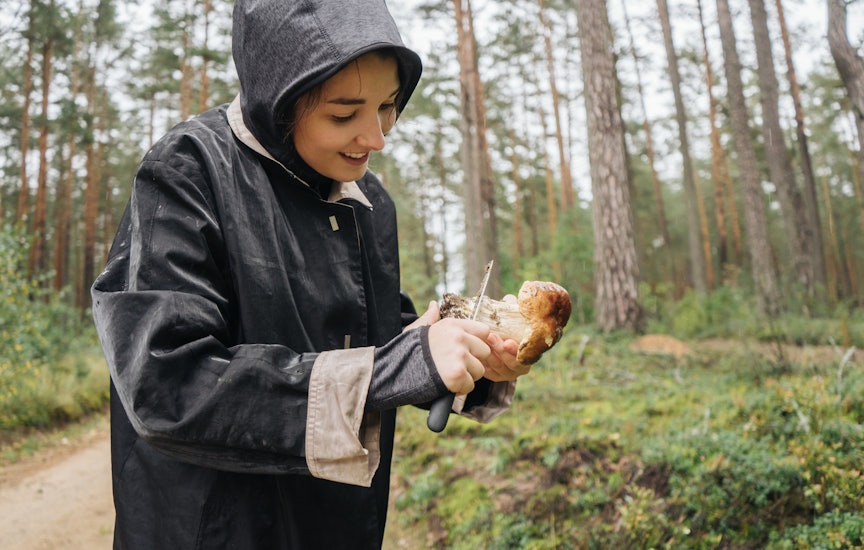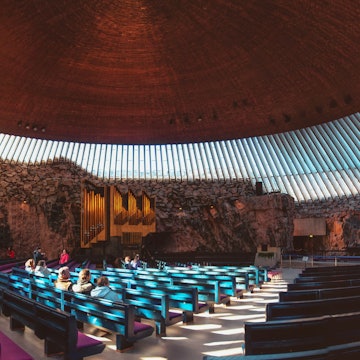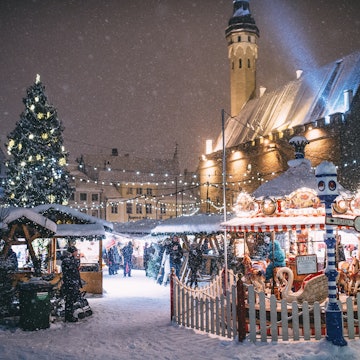

The medieval Viru Gate in Tallinn city. LN team/Shutterstock
Imagining Estonia as a human being, it would be a hippie-turned-tech entrepreneur: savvy, innovative, forward-looking and punching above its (tiny) weight, yet deeply rooted in its cultural heritage and ever embracing its wild side.
Torn between east and north, Estonia offers visitors – both first-time and returning – a diverse palette of experiences. You’ll find a pinch of history, three teaspoons of culture, art and creativity, served on a bed of pristine nature and spiced up by the resilient spirit of the locals. Outside the medieval walls of its capital Tallinn, dark forests, mysterious bogs, windswept coastlines and tranquil islands lure outdoor enthusiasts.
Whether you’re drawn to Tallinn’s bustling streets or the solitude of the national parks, here are some experiences you shouldn’t miss in Estonia.

1. Explore Estonia’s capital, Tallinn
Tallinn's medieval charm will woo you first. Behind every corner of the Old Town, a cobbled alley, a stalwart defense tower or an elegant church spire waits to be pictured. From the Raekoja plats, the historic Town Hall Square, climb up Toompea Hill to admire views over red-tiled roofs. But wander outside of the city walls and you’ll discover that Tallinn is more than just a fairy tale. From the stately parks and art museums of Kadriorg to hipster haven Telliskivi, from chic Rotermann to bohemian Kalamaja, Tallinn’s neighborhoods beg to be explored.
Local tip: In summer, cruise ship tourists flood the tiny Old Town. Check the schedule for incoming ships and adapt your itinerary accordingly. When a cruise hits town, explore museums or neighborhoods outside of the Old Town in the daytime and return when most cruisers have left, by late afternoon.

2. Experience the Singing Festival
Lock three Estonians in a room, the joke goes, and they’ll either found a start-up or a choir. That joke signifies both the digital advancement of the country and its love of singing. Choir singing gave the country a sense of identity during the Estonian national awakening of the 19th century and helped it break free from the yoke of the Soviet Union during the Singing Revolution.
Twice every five years, choirs from Estonia’s farthest corners flock to Tallinn to sing their hearts out during the Singing Festival (Laulupidu). At the beginning of July, boys in sheep wool vests and flat caps, girls with wildflowers in their braided hair, men with top hats and women in traditional dresses go through a repertoire of folk classics and newly composed songs. You don’t need to understand Estonian to sense the emotions. Even if you don’t attend the main event, it’s a merry time to be in Tallinn, with parades all over town and spontaneous bursts of singing in trams. The most recent one happened in July 2025, and the next one is slated for 2028.

3. Spot a bear (or a bird)
With around 30 people per sq km (0.4 sq miles), Estonia’s population density ranks amongst the lowest in Europe. That leaves ample room for wild animals to roam – brown bears and moose are sometimes even spotted in Tallinn suburbs. For a more reliable chance to see wildlife, join a tour looking for lynxes and the elusive flying squirrel. Or book a bear hide in Alutaguse, in the wild east of Estonia.
Sounds like too much adrenaline? Estonia is an underrated birding destination. Its variety of landscapes and its location on migration routes from east to west and north to south attract plenty of feathered friends, including 10 owl species, a handful of different woodpeckers, white and black storks, cranes and capercaillies. Winter draws elegant Bewick’s swans, pretty caramel-colored Steller's eiders and other waterfowl. Coastal national parks like Matsalu and Vilsandi are exquisite spots to see birds.
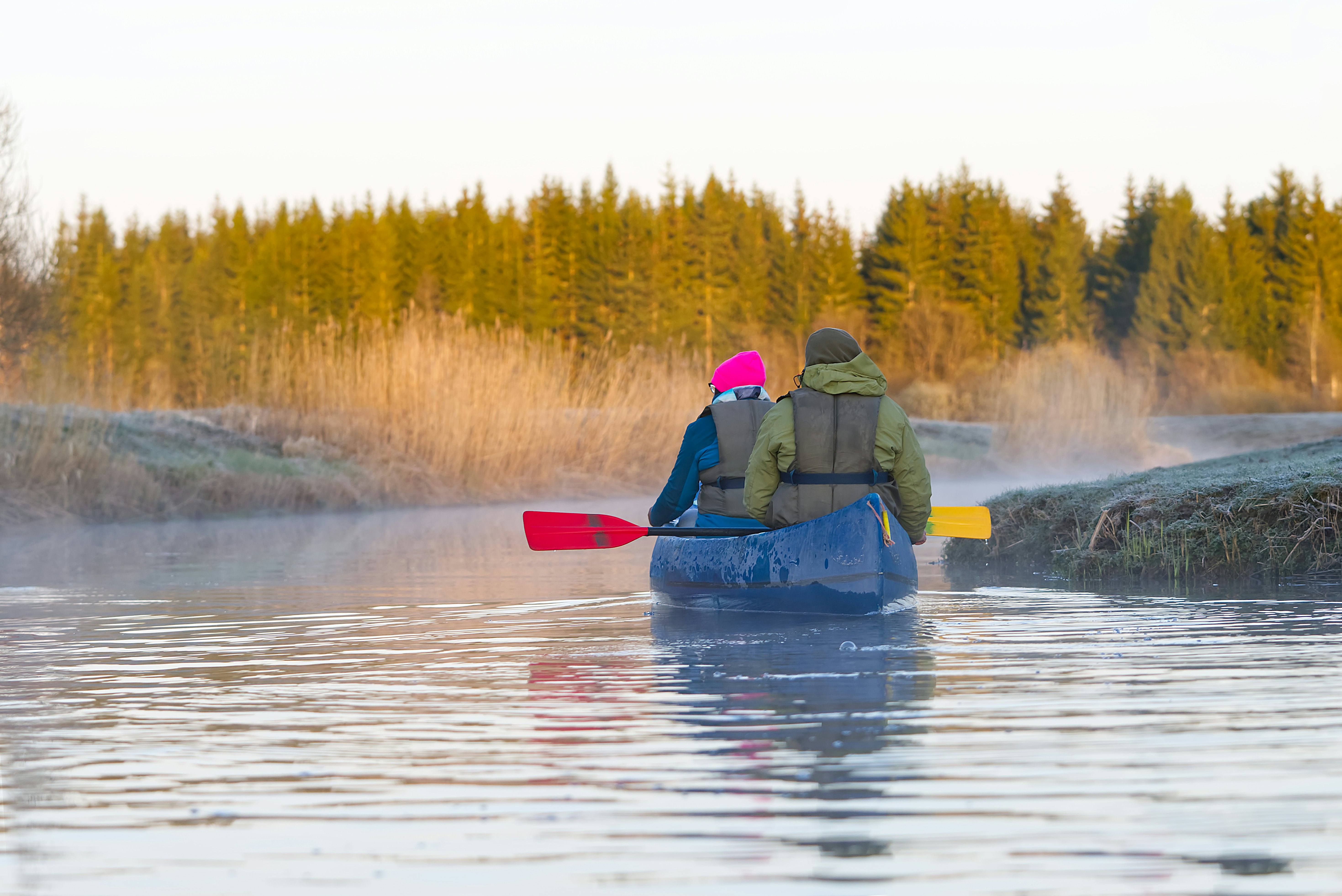
4. Kayak in Soomaa, the Amazon of Estonia
Soomaa ("land of swamps") is Estonia’s most primeval nature, a wilderness of peat moors and riparian forests in which brown bears, wolves, lynxes and moose hide. Five rivers meander through this Estonian Amazon, and locals traditionally used a haabjas to get around, a handmade dugout canoe. The best way to see Soomaa is still from the water. Outdoor company Soomaa.com organizes multiday kayak trips (as well as mushrooming, kick-sledding, bog and snowshoeing). Affable Aivar, who runs the show, makes haabjas by hand.
Planning tip: During the so-called fifth season (usually best experienced in March and April), when snow and ice melt and the rivers cannot drain the excess water in time, the water rises and floods the land. It presents a spectacular opportunity to navigate your kayak through the forests and over the meadows of a water world.
5. Celebrate the summer solstice
When you spend so much time in the darkness, you have to honor the sunlight. Estonians do so on Midsummer’s Eve and Midsummer’s Day (Jaanipäev, or St John’s Day). Both days, June 23 and 24, are official bank holidays. As important as Christmas, Midsummer used to mark the start of haymaking. Nowadays, it’s an excuse for Estonians to escape to their countryside house, grill meat on bonfires and drink copious amounts of alcohol.
Local tip: An invitation from Estonian friends will get you the most authentic experience, teaching you about the many traditions and beliefs around Midsummer – if you’re feeling flirty, ask them where the fern blooms! This is a code for lovers to disappear into the woods together. In lack thereof, head to the Estonian Open-Air Museum in Tallinn or one of the public events around the country.
6. Cross-country ski the President’s Trail
Estonia might not have proper mountains, but it does get plenty of snow, so it’s no surprise that cross-country skiing is a matter of national importance. Even in summer, you might see guys and gals in spandex on roller skis, practicing for the next winter. You can join the locals on the tracks in Tallinn, but the best skiing awaits in the countryside. In the south of Estonia, Elva, Haanja and the country’s winter capital Otepää all boast excellent facilities.
Alternatively, take the short train ride from Tallinn to Aegviidu. Rent skis next to the station and follow the 10-km-long (6-mile) President’s Trail (Presidendirada) through powder-sugar-topped pine forests. Don’t be deterred by the Estonians’ speed and agility – they’re born with skis on their feet. In fact, you’ll find many locals charmed by your attempts at their national sport, even if you’re not moving at record speeds, and you’ll likely hear plenty of encouraging shouts of "Jõudu," meaning strength. Afterwards, join them in the sauna.
7. Use the freedom to roam
Like other Nordic countries, Estonia upholds the everyman’s right (locally called igaüheõigus or igameheõigus), granting everyone permission to hike, camp or forage almost everywhere, including on private land. Nothing says freedom quite like rambling through the country with a tent on your back! Long-distance hiking trails crisscross the country, follow the coast or seek out the forests. With rights, however, comes responsibility – do check the rules, exceptions and code of conduct outlined by the government.
Parallel with the freedom to roam, Estonia’s state forest service RMK provides campsites in national parks and elsewhere. These have basic amenities, such as fire pits, picnic tables and dry toilets, and are free to use. Deservedly popular camping spots include Cape Purekkari (Estonia’s northernmost point, in Lahemaa National Park), Nõva Recreation Area (dunes, pine forests and beaches of "singing sand" in the northwest of the country), and the beaches of Lemme and Krapi (south of Pärnu).
Planning tip: RMK’s website overflows with information about hikes, free campsites and rental cabins.
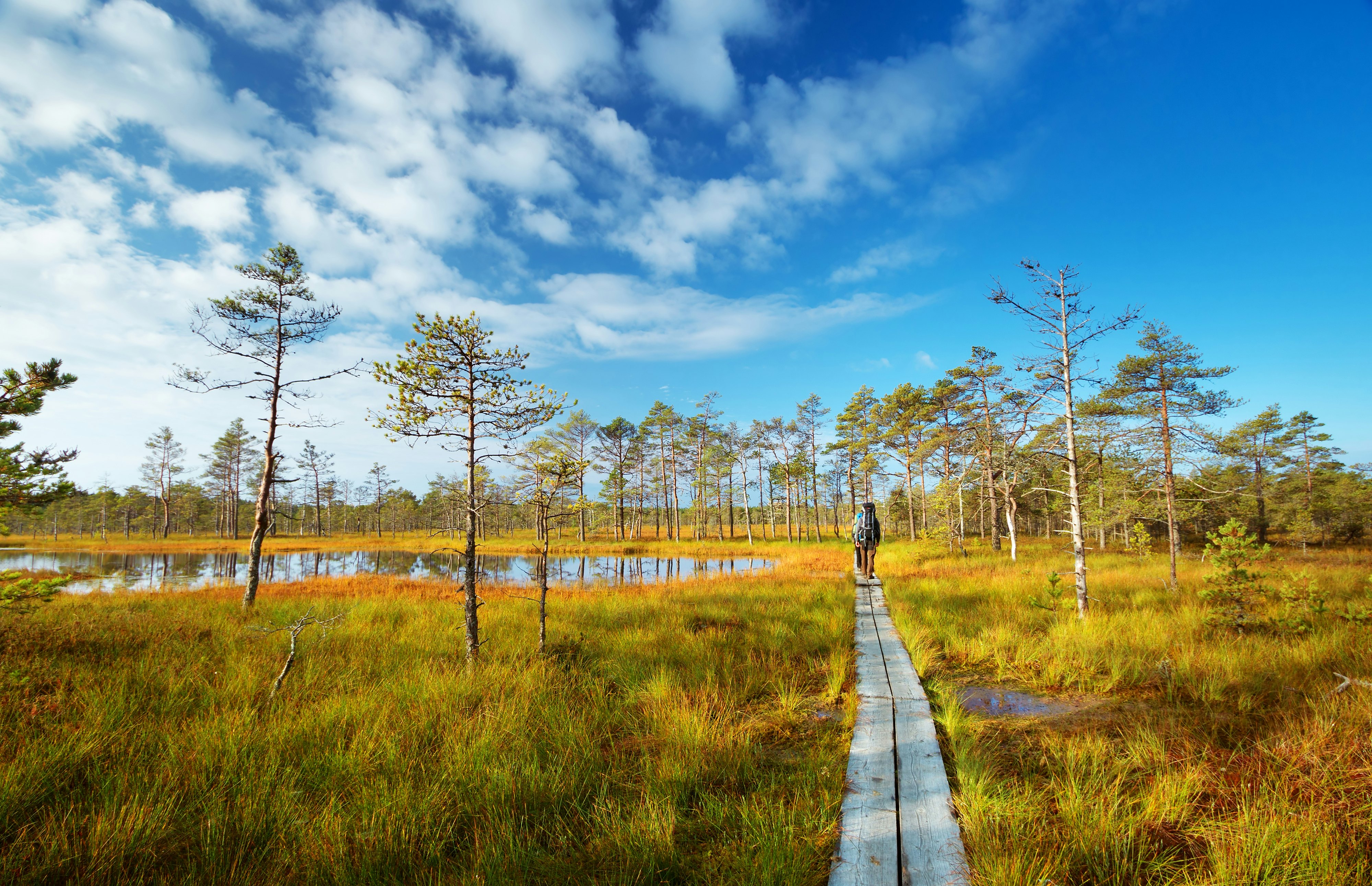
8. Hike over duckboards in a bog
For centuries, bogs had a serious reputation problem in Estonia. They were scary places where criminals hid and evil spirits caused travelers to get lost. That attitude has changed completely. Bogs are now the country’s most-revered landscapes, where Estonians go for Sunday family walks.
The bogs of Viru and Riisa (in national parks Lahemaa and Soomaa) pull the biggest crowds. Beat the masses by going early, when wisps of fog veil the landscape, or aim for one of the lesser-known bogs, like Mukri, Tuhu or Marimetsa. On a city break in Tallinn and no time to go rural? Urban Pääsküla bog allows you to experience such a landscape without leaving Tallinn. Hiking trails over duckboards loop through all these bogs, limiting the age-old risk of sinking in or losing your bearings.
Local tip: In summer, don’t forget your swimsuit – no wild swimmer resists a plunge in a bog pond!

9. Soak up island vibes
With an archipelago of more than 2000 islands and islets, Estonia offers an unlikely island-hopping opportunity. The biggest and most-visited island, Saaremaa, sends you straight back in time. Expect ancient windmills and farmhouses, even older churches, a spectacular meteorite crater, a fairy-tale castle and enough juniper bushes to provide a midsized capital with gin from now until eternity. The entrepreneurial islanders, fiercely proud of their home, welcome you to one of the many spas – no wonder Saaremaa is nicknamed Spa-remaa.
Detour: Don’t skip the smaller islands. They give you a proper sense of being surrounded by water and are often tiny enough to explore on a bike or even on foot. So embark on a ferry to Ruhnu, Aegna, Naissaar, Vormsi or Kihnu. The latter, off the coast of Pärnu, is known as a matriarchal society – whilst the men were at sea fishing, the women ran the island.
10. Head to Tartu for a lesson in Estonian history
In Tartu, Estonia’s prime student town, knowledge takes center stage. University students flood the streets, their feet tapping or scuffing on the cobblestones, the frantic chatter of gossip. Every time the Town Hall bells chime, their pace quickens. Lessons start 15 minutes after the hour. Since time immemorial, the spirit of Tartu (Tartu vaim) has attracted youngsters thirsty for knowledge (and beer), artists, writers and bohemians. They still congregate in bars across town, philosophizing about life and love.
In a suburb lies one of the best museums in the country. In the Estonia National Museum, you can learn about the fortunes and misfortunes of the country – from the Stone Age to e-Estonia. The superb permanent exhibition Echo of the Urals represents the Komis and the Udmurts, the Maris, the Sami and all those other distant Finno-Ugric cousins of the Estonians. When your brain is tired from the information overload, use your ticket to save the explanation panels digitally to read at home.
11. Get to know Estonia’s Soviet past
However much the Estonians would like to forget this painful chapter in their history, the remnants of the Soviet occupation still linger. Many Tallinners would prefer to see brutalist structures like Maarjamäe and Linnahall demolished, but for now, they continue to serve as reminders of the communist era, much like the residential districts of Lasnamäe and Mustamäe. The Vabamu Museum of Occupations and Freedom, the KGB prison cells and the Viru Hotel, where secret agents eavesdropped on guests from the hidden 23rd floor, are the best places to learn about this period.
Detour: Once a resort town where St Petersburg’s cultural and academic elite holidayed, Sillamäe became a closed city and a code on the map, R-6685, after the discovery of uranium. Suspicious of the potentially dissident Estonians, Moscow shipped in loads of Russian workers to staff the factories. To this day, Sillamäe is the most Russian city in Estonia. Its elegant stairs leading to the Baltic Sea, once lined with palm trees, can almost make you believe you’re in Odessa (until an icy wind reminds you of your real geographical location).
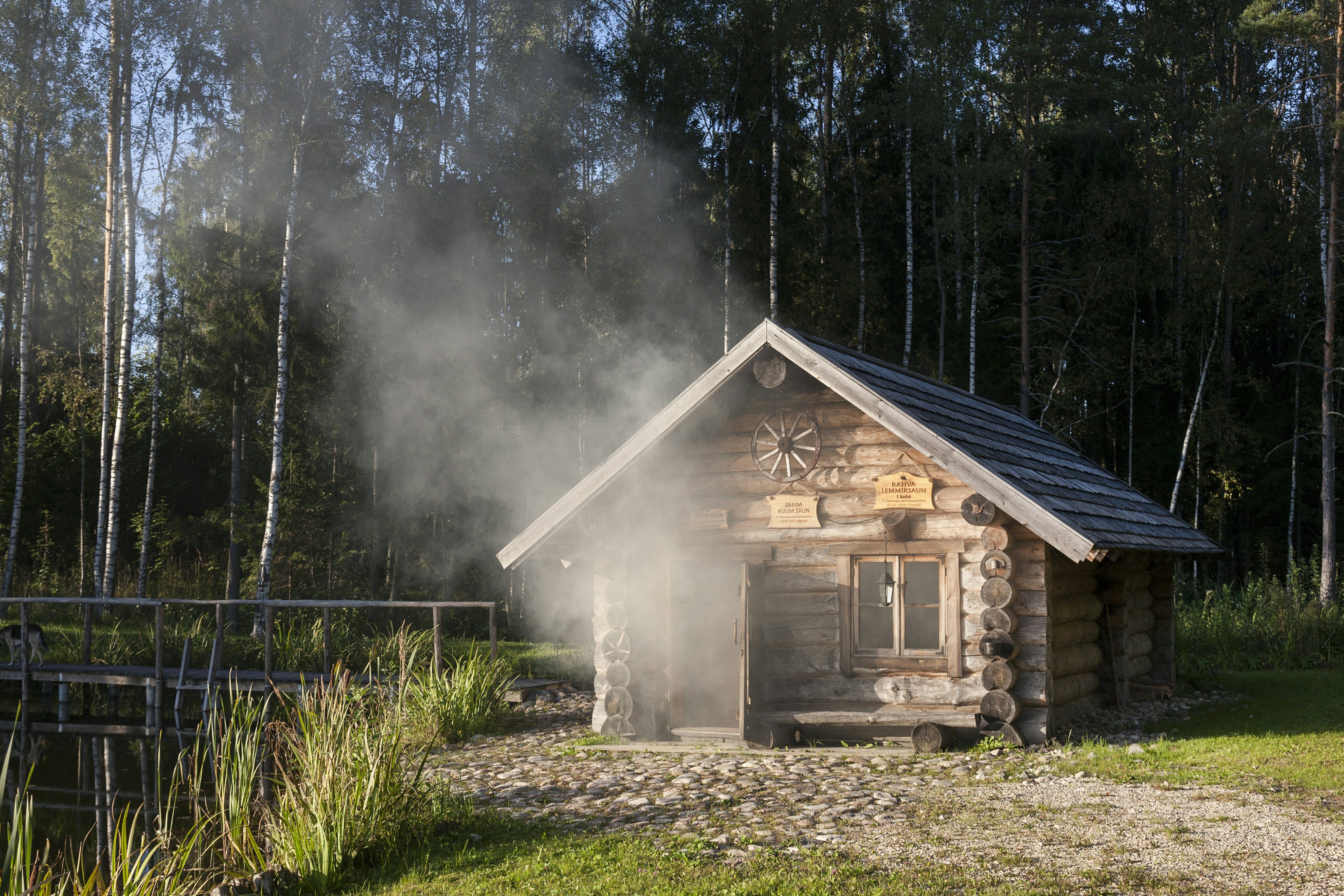
12. Sweat in a smoke sauna
Like their Finnish neighbors, Estonians are addicted to saunas. A visit to the sauna is essential to survive the brutal winter, chasing the cold out of your bones, but also to relax and socialize. The most traditional form, the smoke sauna, has no chimney and must be heated for hours. Many of the best smoke saunas can be found in the countryside, often in the south of Estonia. Toidupada and Mooska Talu, among others, welcome guests. The leil in a smoke sauna – the steam that vaporizes from the stones – does not suffocate, but feels rather like a warm embrace. Rotate for a few hours between sauna, hot tub and ice-cold lake, and your stress will evaporate together with your sweat.
13. Go foraging and taste the land on your plate
Raspberries, wild strawberries, cloudberries, blueberries, bog billberries, lingonberries, chanterelles, boletus, wild garlic: Estonia’s culinary gold comes from nature. The locals love nothing more than to hunt for it. In summer, keep your eyes peeled whilst hiking through pine forests and you’ll undoubtedly stumble upon blueberries. Wild strawberries often grow on the edges of woodlands, raspberries on the sides of roads and trails. Finding other delicacies might require a tad more expertise.
Even if you’re not up for a walk on the wild side, you can still enjoy nature’s bounty. In restaurants and cafes all over Estonia, look out for berries in drinks, cocktails and desserts, mushrooms and wild garlic (called karulauk in Estonian, or wild garlic) in main dishes, snacks and soups. Or head out to forest restaurant Nõmbra for foraging expeditions, cooking classes or to simply savor the menu.
Planning tip: No Estonian in their right mind will reveal their favorite spots to collect berries or mushrooms, but luckily state forest service RMK compiled a list of foraging spots near campsites (in Estonian). Not sure that you can distinguish a horse mushroom from a destroying angel? Afraid to get lost in the boundless forests? Several tour operators, such as Nature Tours Estonia, Soomaa.com and Prangli Travel, will happily take you on mushrooming or berry-picking trips.

14. Join the summer revelers in Pärnu
During nine months a year, Pärnu is asleep. But come the first sunny day and half the country – as well as a good chunk of Finland – gathers in the city that tongue-in-cheek Estonians call the "Ibiza of the north." On balmy days, few things are more glorious than zipping past wooden villas on a bike, sipping cocktails or longero (gin-based long drink) in beach bars, ordering pizza at legendary Steffani or basking in the glow of a never-ending sunset. Just don’t expect the seawater to be warm.
Local tip: Hopscotch to the end of the long stone pier for the best sunset, and bring along your partner for the promise of eternal love.
15. Meet the Russian Old Believers on the Onion Route
In the 17th century, the Russian Orthodox Church forbade its believers from making the sign of the cross with two fingers. From then on, it could only be done with three fingers. Not everyone appreciated this change. Fleeing persecution – dissenters were routinely burned alive or had their tongues cut out – some Old Believers settled on the shores of Lake Peipsi, a massive body of water on the border with Russia.
Many still live in a string of old row villages known as the Sibulatee (Onion Route), named for the beloved bulb crop that thrives in the sandy soil. Lacking major attractions, the area nevertheless exudes a unique charm. Jump on a bicycle to explore sleepy villages where trout, salmon and onions are drying by wooden houses, samovars are always brewing and Orthodox icons adorn the walls. A newly renovated museum in Kolkja explains the lifestyle of the Old Believers, worship houses in Kasepää, Kallaste and Rajaküla, and the Samovar House in Varnja offer a further glimpse.
Detour: Straddling the frontier between the southeast of Estonia and Russia, the historic region Setomaa nurtures a distinct culture that mixes traditions from both sides of the border. The Setos have their own language, religion and cuisine. Once a year, on the first Saturday of August, they choose a king, an earthly representative of Peko, the pagan harvest god.







